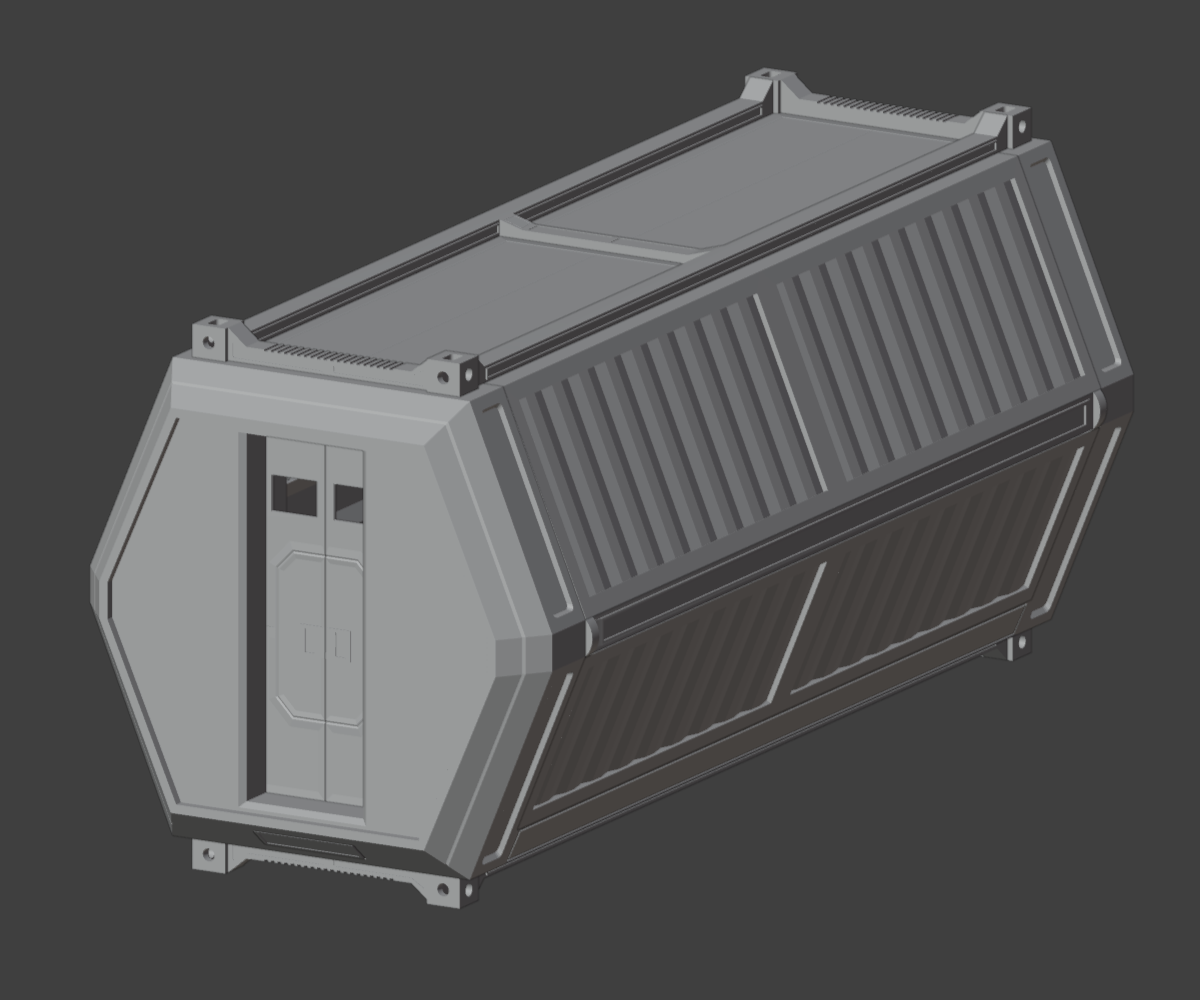My vision for the project encapsulates a utilitarian aesthetic in the form of a modular hexagonal cargo container that could be feasibly seen in the foreseeable future or in a video game. Given the aesthetic, I drew inspiration from actual cargo containers — ubiquitous in logistics and variants that fulfill roles ranging from prefabricated housing units to workshops — and assets in many video games I’ve played.
Regarding real-life inspiration, the cargo containers seen everywhere are pretty versatile as they’re typically repurposed to fulfill other tasks besides storage. Anyone has probably already seen the numerous instances of some old containers being turned into small houses or office spaces, but containerized housing units piqued my attention. Containerized housing units (CHU) are familiar sites in construction sites, remote areas, military installations, and places that require rapid establishment of infrastructure suitable for prolonged periods. In some instances, CHUs come pre-furnished along with other amenities like running water and electricity once hooked to a local system.


The hexagonal-shaped idea was mainly derived from the Command & Conquer series. Especially the troop containers used by GDI’s dropship or general storage. These containers are seen as troop compartments latched under a transport ship or stacked tall in the environment.




All of these sources guided the overall aesthetic and principle that I wanted to achieve for this project: the container being capable — or at the very least seen as having the potential to — of fulfilling other utility aside from storing cargo. While a far cry from the original vision of having different variants to further drive home the broad utility these containers would be capable of, it nonetheless still gives the utilitarian aesthetic.
References
[2] https://polygonsatwork.com/projects/nOZbo
[3] Screenshot from Command & Conquer
[4] https://print.payrollschedule.net/
[5] https://www.artstation.com/artwork/mzaqGa
[6] https://www.artstation.com/artwork/x1Lom
[7] Program Used: Blender 4.0
https://www.artstation.com/artwork/QzY53r
https://www.artstation.com/artwork/DxwKXy
https://www.artstation.com/artwork/RyEZaE
https://www.artstation.com/artwork/68LmD5
https://www.pinterest.com/pin/787848528596362512/
https://www.pinterest.com/pin/787848528596119232/
https://www.pinterest.com/pin/787848528596424298/
https://www.pinterest.com/pin/787848528596119229/


2 Comments. Leave new
Hi Vincent, this looks like an awesome idea. Is your modular container for cargo only? Or could it be adapted to become a living space like some of your references? Also, will you build this out or is it a 3D model? Either way great work!
The current model is indeed for cargo use only, though I wanted the design of the container to have people consider that it could serve other purposes like I initially envisioned. I haven’t had plans to create a physical model though I’ll keep that in mind for the future.